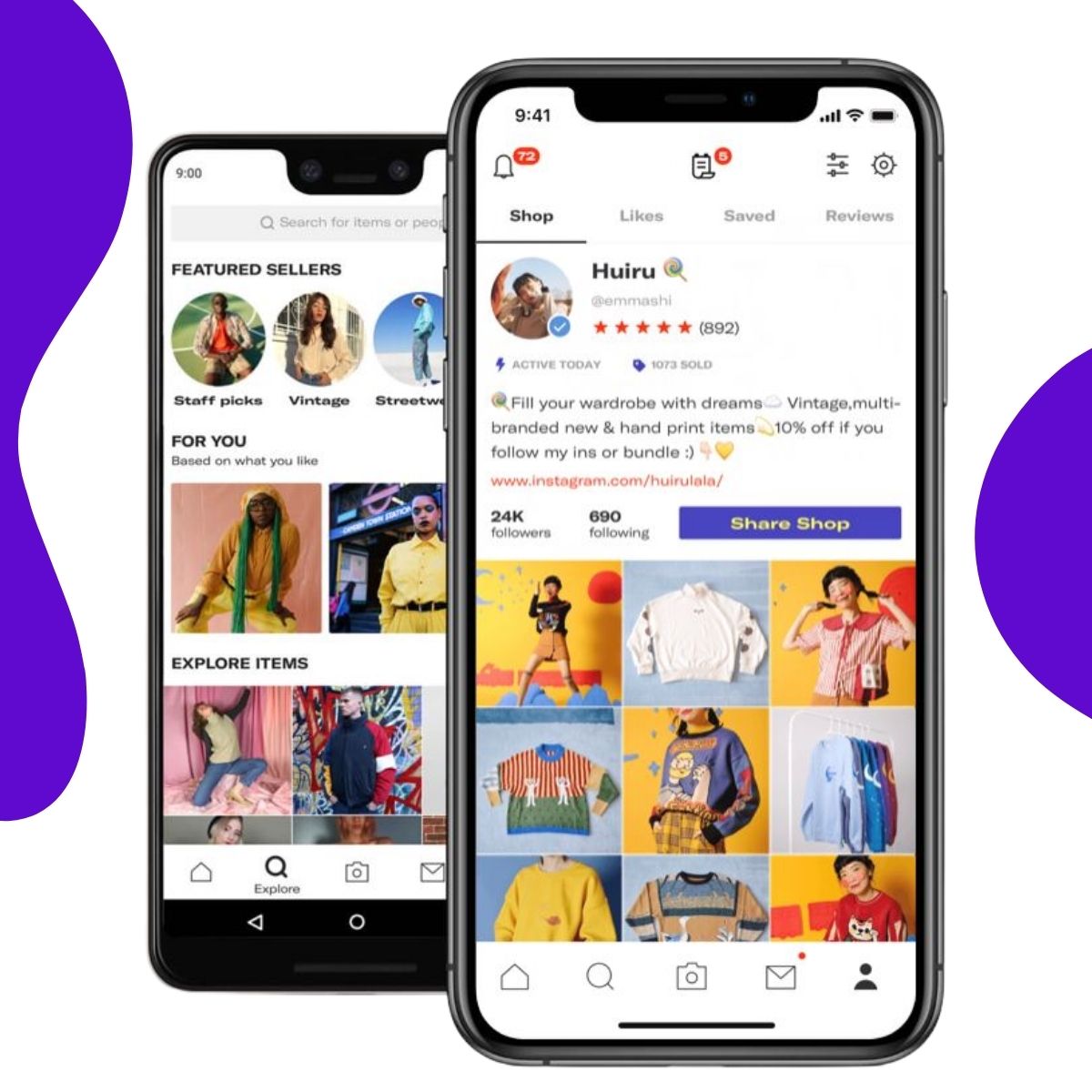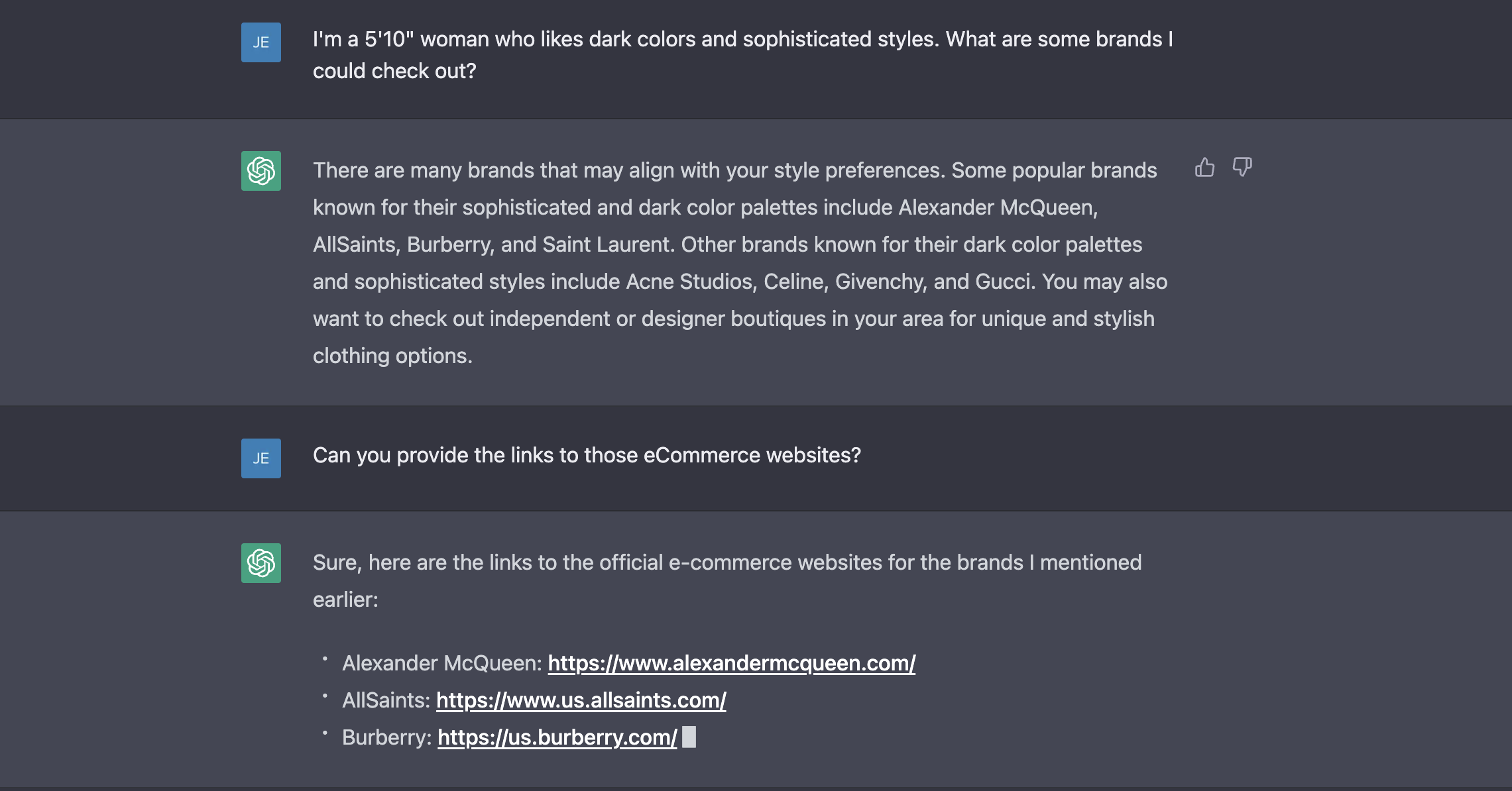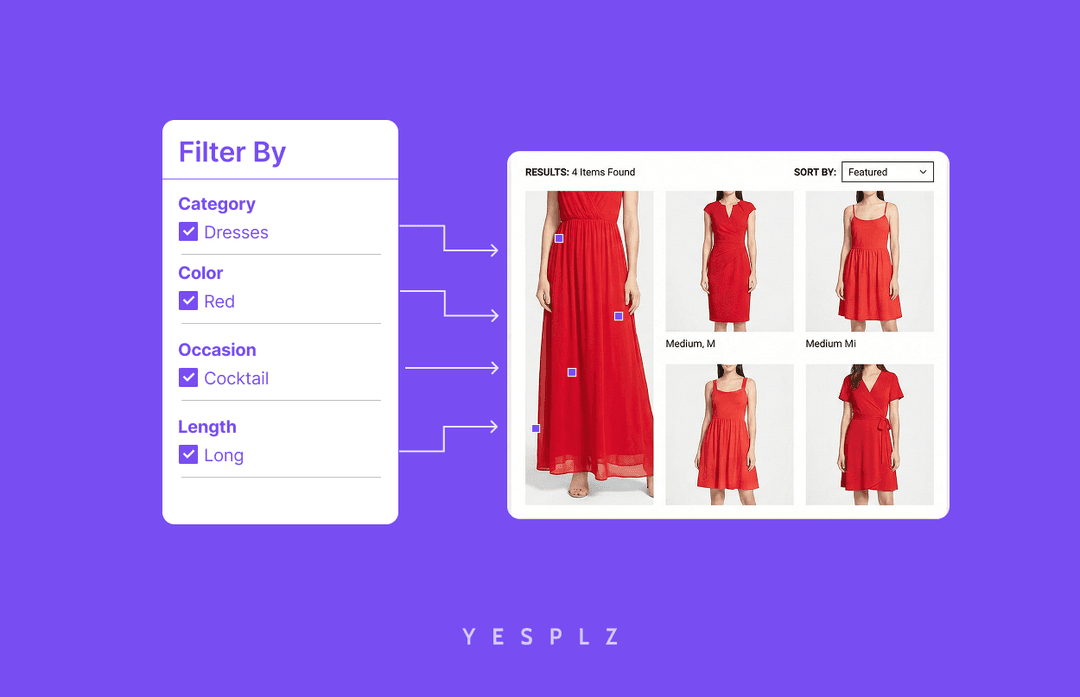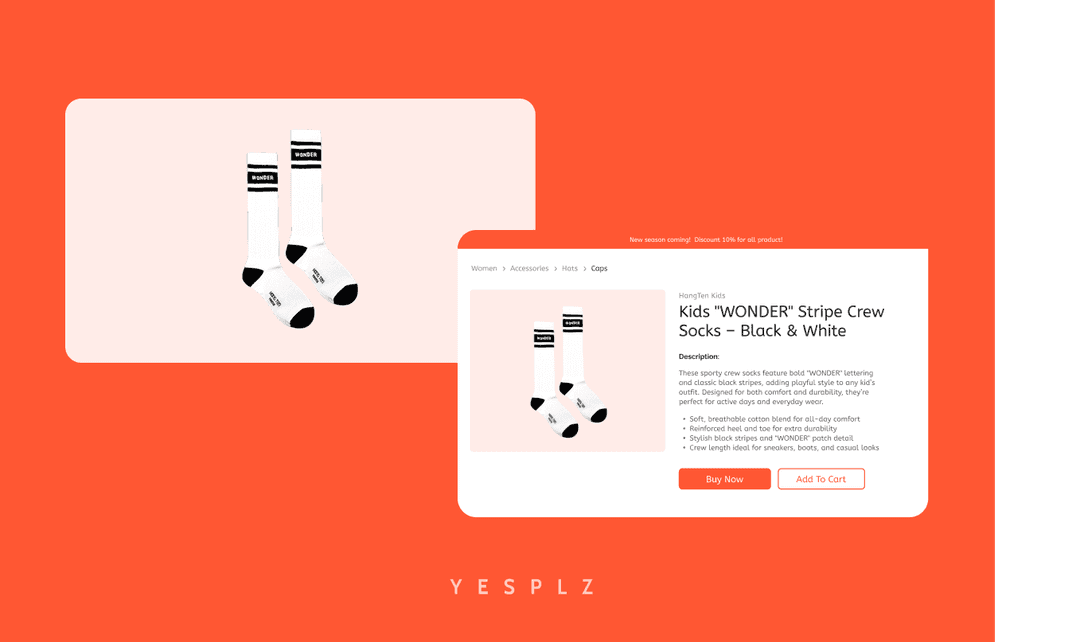YesPlz AI Predictions
by Jess Erdman, Content Marketing LeadJanuary 2023

Fashion tech had a breakout year in 2022, with many fashion retailers embracing new technology to alleviate the pains of unstable supply chains, rising customer demands, and a competitive online shopping landscape.
But, what are the top eCommerce trends for 2023?
While we don’t have a crystal ball at YesPlz AI, we do have years of experience looking at past fashion technology trends. You can look at our previous analysis of pandemic fashion trends here.
Read on for our predictions, ranging from AI technology to the further optimizing the user experience to the hard-to-ignore explosive AI tool, ChatGPT--and how it will affect the industry.
Did we miss a prediction? Do you disagree? Let us know.
Follow and comment on our LinkedIn updates
Before digging in, let's take a look at our previous predictions in 2021 and 2022 to see how they performed.
Read our 2021 fashion technology trend predictions in full here.
Prediction 1: A return to authenticity and community
We predicted that fashion eCommerce brands would try to engage with customers through clear and authentic communication. During the pandemic, customers were bombarded by emails, newsletters, and messaging from fashion brands. And, as a result, customers wanted clear, value-driven communication that made its point in a concise and understandable way.
In 2021, customers not only demanded clear communication but began to question brand values: was the brand sustainable? Did the brand deliver on its promises? How value-driven was the brand itself?
We also saw customers move towards sustainable, ethical consumption as secondhand platforms began to rise in popularity.

Secondhand fashion platform Depop was acquired by Etsy in 2021, signaling a long-term move towards sustainable consumption.
Prediction 2: Rethinking the search and discovery experience
We predicted that fashion ecommerce brands would experiment with new search and discovery tools to keep over-stimulated customers' attention. Tools such as visual search, powered by fashion artificial intelligence, made the customer purchasing journey seamless.
In 2021, brands such as Levis began to experiment more with visual search, blending the visual with semantic search to meet customer needs.
And, more use cases for visual search emerged for retailers, making retailers even more likely to implement visual search. Two problems emerged for retailers in 2021: 1) current search navigation was disappointing for newly sophisticated customers; 2) product tagging was time-consuming.
Through visual search tools such as YesPlz AI's Style Filter, retailers could quickly tag product attributes using fashion AI--and provide an exciting customer search experience.
Prediction 3: User behavior would permanently shift from offline to (mainly) online, requiring advanced tools to replicate in-store customer experience.
In the past 2 years, shoppers became more sophisticated and comfortable navigating online shopping. As a result, shoppers have high demands and low attention spans for bad search and navigation experiences.
We predicted that shoppers would shift their shopping patterns online.
How do we know? During user interviews, one theme has repeatedly emerged: shoppers are purchasing online 100% of the time, after COVID.
However, there was still one core component missing from online shopping: a helpful sales associate to guide shoppers.
In 2022, we expected that sophisticated search and recommendation tools would step up to take over the role of friendly sales associate, guiding customers towards the products they want and suggesting alternatives.
Customers want product search and filters that reflect their style preferences. Search and recommendation tools are becoming more advanced, with greater understanding of what matters most to customers: fit, style, and fashion.
Prediction 4: Fashion AI technology will become more powerful and sophisticated than ever.
Fashion AI is here to stay--and it's only getting better and more accurate each year. AI technology can now perform what humans can do, but more effectively.
Image tagging is a tedious but highly skilled task that requires not only accuracy but a well-trained sense of fashion. A few years ago, it would have been impossible to think that fashion AI could not only tag product attributes effectively, but could even do so with an understanding of fashion.
Fast-forward to 2022, and AI image tagging is more powerful and more accurate than ever before. While retailers may have experienced mishaps during the early years of image tagging, we predicted that in 2022, AI image tagging will be ready to make its debut as the center of attention in fashion tech tools.
Occasion tagging is front and center as a real-world application of fashion AI technology, and will continue into 2023:
Occasion tagging is one of the most requested filters from shoppers, but not many retailers offer it. Why? Because a human needs to manually tag each product, making sure that product is accurately classified into the appropriate mood occasion.
Enter fashion AI, which understands not only the difference between a “t-shirt dress” versus “beach dress”--but can categorize the t-shirt dress as a “casual” occasion product and a beach dress as a “vacation” occasion. This is revolutionary for the future of retail.
Of course, fashion AI is still in the process of learning every style, but can automate hours of daily work.
Contact us to learn more about image tagging
Prediction 5: Fashion eCommerce brands will race to implement search personalization technology to support changes in shopper behavior.
We predicted that technology will be applied in every part of the customer journey:
1) Product Discovery: Fashion retailers will use visual search to help shoppers explore products.
2) Consideration: AI-powered product recommendations will guide shoppers to purchase products that make sense, based on browsing history, fashion, and product category. Virtual fitting rooms can also support customers looking to try-on clothing.
3) Check-out: Through personalization, retailers can remember customer preferences and apply them for future site visits.
Through technology, retailers can support changing customer behavior, providing them with a sophisticated and seamless shopping experience.
Search Personalization in Action: Targeting Based on User Behavior
We learned during our user interviews that shoppers are triggered to visit a website when they receive an email with a photo of a product they like. But, how can brands determine which photos would trigger a click to visit the website?
Through fashion AI, hundreds of photos are quickly scanned in minutes. Then, a relevant product image is selected that’s unique for each individual, resulting in effective personalization.
We’re excited to see how fashion technology trends will continue to evolve in 2023, from areas such as search personalization to virtual clothing to second-hand shopping.
How fashion technology trends will bring a digital salesperson to your favorite ecommerce brand:
1-AI-powered search: While a human sales associate can filter for some product attributes, AI-powered search can filter through thousands of product attributes and images in seconds.
In addition, AI-powered search tools can automatically tag images with corresponding product attributes, saving customers from confusing fashion taxonomies.
2-Data-driven hyper-personalization: Although search personalization has existed for years, it's becoming more powerful in 2023. With new technology developments, customers can receive lightning-fast product recommendations, see relevant products, and receive dynamic re-targeting.
3-Visual search: Through fashion visual search, users can search using unique visual interfaces, such as a virtual mannequin, and filter by their preferred product attributes and fit.
4-Virtual try-on: One of the most frustrating parts of shopping online is the question of fit. Virtual fitting room startups such as Drapr are bridging the gap, and improving the online shopping experience.
We mentioned above that one of the biggest problems in online shopping is the lack of a friendly sales associate who always has amazing product suggestions and finds the perfect product. In 2023, we're hopeful that the combination of the above technologies can emerge to fill the sales-associate gap.
Fashion technology trends aren't only reactive, solving for previous problems. It can also provide an exciting peek into the future of retail, as a digital-only world emerges. Here’s what we’re watching for in 2023:
1- ChatGPT can take over the role of stylist (to an extent)
Besides making waves in the academic world over its skilled essay-writing abilities, ChatGPT also has potential in the world of eCommerce--as a fashion stylist. For example, we asked ChatGPT to give brand suggestions for a 5'10" woman who preferred dark colors and a sophisticated styles.
These are the results:

Unfortunately, ChatGPT is text-driven and doesn't display images the way a shopper would expect. But, it certainly has the ability to redirect shoppers to websites that have fashion brands that meet my preferences.
In 2023, expect to see more eCommerce website pages optimized and with more tailored content to be more easily discovered.
2- Recession-chic meets environmentally conscious as circular fashion will evolve even further, but with the addition of AI-powered search personalization
Your favorite brands now have resell options to purchase second-hand products--and the secondhand online marketplace will continue to grow in 2023, from the RealReal to Poshmark to Cream.
Reflaunt has emerged as the Shopify for brands looking to include resell options on their website, providing the platform for luxury eCommerce to create secondhand marketplaces.
Reselling is a fantastic environmentally friendly option to reduce waste when compared to fast fashion, but it comes with a product discovery challenge: anyone who used a resell platform in 2022 will tell you that it's difficult to find products. With varying quality of images, no uniform descriptions of products, and an overwhelming number of products (in different conditions), there's an eCommerce product discovery problem that needs to be solved in 2023.
AI-powered product discovery will emerge as an eCommerce trend in 2023 as a way to seamlessly optimize secondhand marketplaces.
But, how?
Through AI image tagging, products can be automatically tagged and identified in seconds, even in low quality photos--no more relying on a vendor's information. In addition, once the products are tagged, secondhand marketplaces can access a world of product discovery tools, from product recommendations to enhanced text search.
Therefore, expect higher quality secondhand marketplaces in 2023, if there's AI-product discovery involved.
The impactful changes of 2022 will shape 2023
2022 was an unforgettable year for fashion techology trends, and it was unprecedented to see brands experiment with such new technology. And now, we can get excited for 2023, which will include everyone's crowd-favorite, ChatGPT, alongside AI-product discovery as an effective way for eCommerce brands to optimize.
We suggest you follow our LinkedIn page to keep an eye on the fashion tech technology developments in 2023. We’ll see you there!
Written by Jess Erdman
Content Marketing Lead
I'm passionate about creating cool content. The best part? I get to learn new things about fashion tech and ecommerce everyday. Have an idea or opinion about this article? Reach out at jess@yesplz.ai

Stop losing sales to poor product filtering. Discover how AI simplifies creating Shopify filters, saving you 25-50 hours per 100 products.
by YesPlz.AI

Automate Shopify product pages and cut 50–100 hours of manual work. AI generates product titles, descriptions, and metadata instantly from product images.
by YesPlz.AI